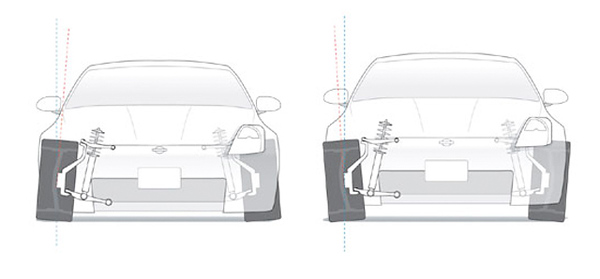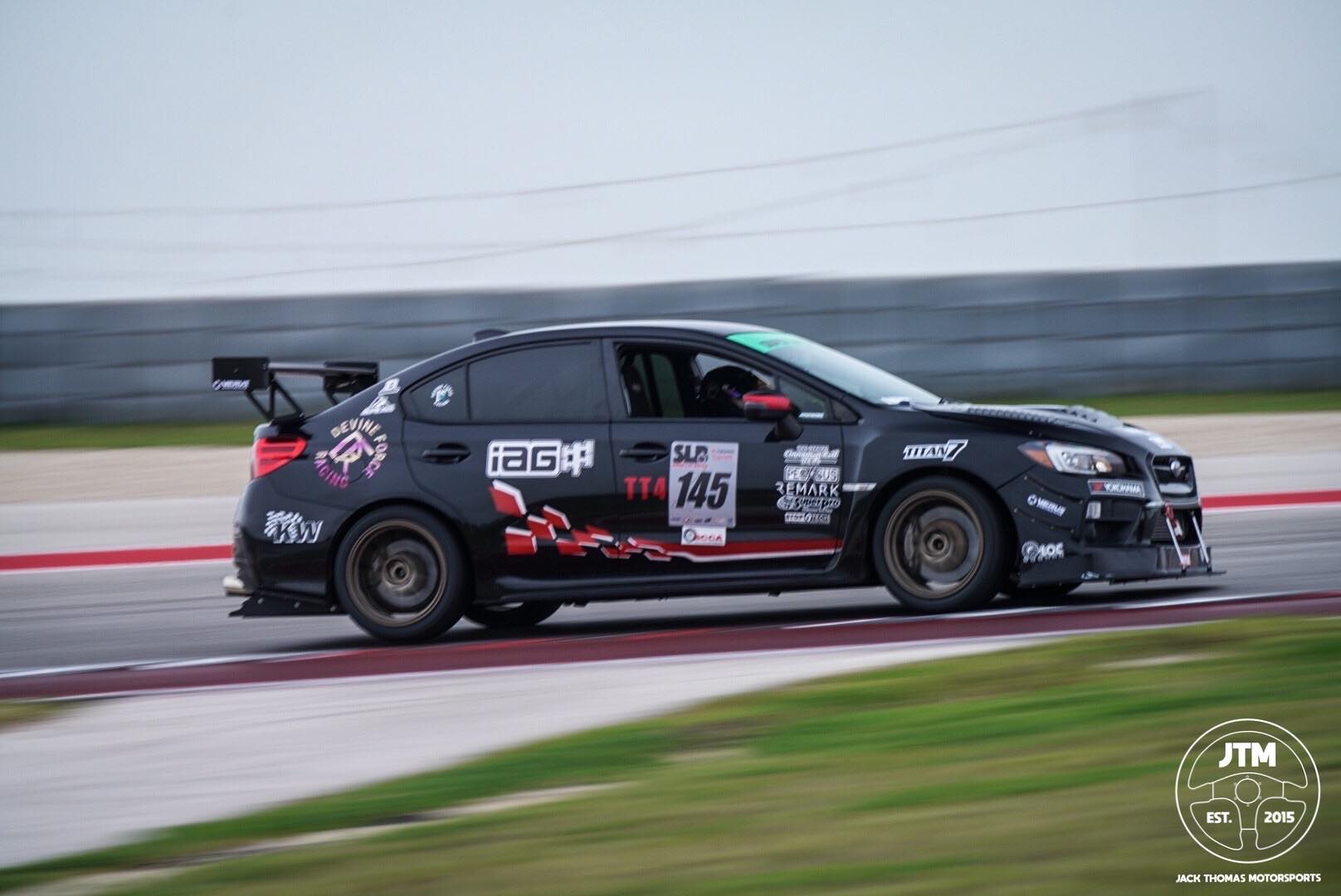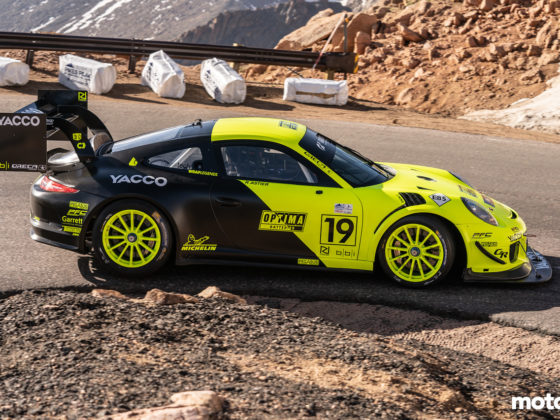Subarus are known for their competitive advantage of AWD and the ability to always have traction pulling you through the corners. It’s important to note the use of pulling, and not pushing. Pushing through a turn, or otherwise known as understeer, is something I found myself fighting on track with my stock suspension. Late in the 2019 season, I added KW’s ClubSport 2-Ways, which helped a lot by lowering my center of gravity, reducing my body roll, adding double adjustable compression and rebound damping and allowing for improved handling. However, that by itself wasn’t enough. I finally got a taste of what performance handling felt like and I enlisted the help of Mike Kojima to show me the way. The Devine Force Racing STi soon partnered with SuperPro Suspension Parts to tackle the 2020 racing season.

I found it crucial to first understand Newton’s Laws of Motion when planning out the suspension specs. If we take a look in our old science books, the ones we thought were completely useless at the time, we find that Newton’s 1st Law states “every object will remain at rest or in uniform motion in a straight line unless compelled to change its state by the action of an external force”(Urone and Hinrichs Introduction to Dynamics: Newton’s Laws of Motion – College Physics), which in racing can translate into hitting the gators or if you’re at COTA, the huge yellow bumps that I don’t recommend hitting. By doing this, the tires can lose contact with the track interrupting the friction we want between the track and tire. Vertical acceleration then occurs, which then touches on Newton’s 2nd Law, “ The acceleration of an object as produced by a net force is directly proportional to the magnitude of the net force, in the same direction as the net force, and inversely proportional to the mass of the object.” (Urone and Hinrichs Introduction to Dynamics: Newton’s Laws of Motion – College Physics) . The magnitude can also represent as the speed when hitting the gator, and the direction will be the direction the tires are moving by hitting the gator (up), therefor vertical acceleration is created. When the wheels are forced back down to the track by gravity it’s important to have a suspension system that can absorb the energy created and allow of the chassis of your vehicle to be undisturbed. F=ma, the more force, and the less mass mean the more acceleration that can be achieved. Newton’s 3rd Law, states “For every action, there is an equal and opposite reaction.” (Urone and Hinrichs Introduction to Dynamics: Newton’s Laws of Motion – College Physics), meaning as you brake, tires are being forced forward and down against the ground while the ground does the opposite causing speed to decrease as long as the tire contact is meeting the ground.

The main goals of the suspension system are to basically maintain tire friction with the track, support the weight, and absorb and dampens shock. SuperPro and my team worked to pick some of their quality parts to help tie in the suspension needs for the 2020 racing season. The first thing we choose was the Front Alloy Lower Control Arms + Caster Offset DuroBall® Kit. This kit allows for camber gain and caster increase, reduced weight by about 40% compared to OEM, reduced arm flex and is corrosion resistant.

The lower control arms with the added DuroBall bushing assembly allows for a more precise steering and handling and positive caster. The DuroBall has the low friction and articulation of a spherical bearing with the vibration absorbing and NVH characteristics of a bushing. Positive caster is known to create self-aligning torque, which is important at higher speeds on the back straights. It also helps when exiting the turns, by helping pull the tires to a straight line and allowing me to make a smooth exit. This positive caster paired with the increased camber due to wider track width allows the tires to make the maximum contact patch to the track during turn-in and steady-state cornering.

Camber is another essential part of braking and turning. We want the camber to be controlled to a point where there’s enough gain during a turn and also not too much so that while braking the tire is still utilizing the greatest contact patch with the track. Without the additional camber gain from these control arms, the vehicle would experience a great amount of roll during the lateral load transfer, making the contact between the tire and track a minimum especially when turning.




4 comments
Any time urethane is mentioned it should automatically include the Teflon tape trick (where you put a layer of Teflon tape before you grease up the bushing and the sleeve).
I learned it years ago from a YouTube video that said he learned it from none other than Mike Kojima.
You can also spray paint the sleeve and the carrier with Cerakote Microslick (the stuff they put on piston skirts) before you grease them if you want to be extra.
Those front control arms weigh 40% less than stock? Those just look like polished versions of the factory VA chassis aluminum arms with Superpro’s bushings pressed in. Is the 40% comparing to an old (non-STi) WRX stamped steel piece from an older chassis?
Also, stock caster is pretty high on these cars. Did you see an improvement with additional caster?
It went from 4.5 to around 6 degrees which isn’t that much.
I designed the overkill (and expensive) rally TCAs for GC/GR with the adjustable dovetail blocks that went from stock to 7 degree caster. 7 at the wheel end was pretty much the max on GRs for rally, you can get an extra degree on fast stages with an adjustable topmount.
Tarmac is a different beast though, lower car, lower roll center, stiffer suspensions with less travel, wider and lower profile tires.